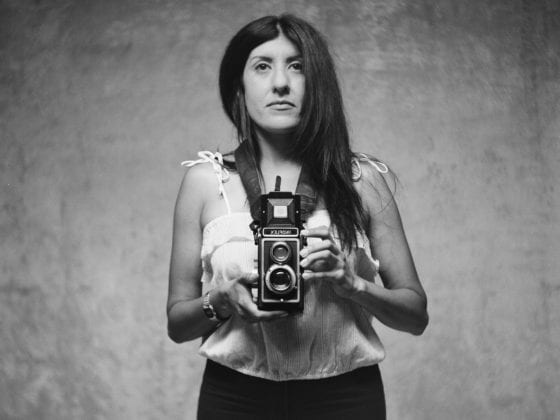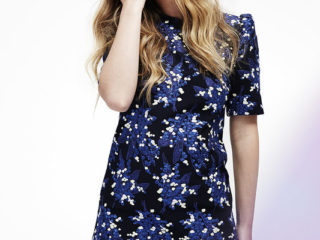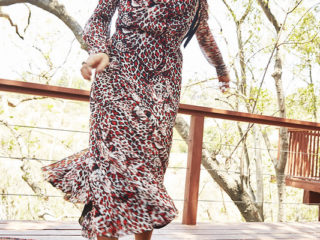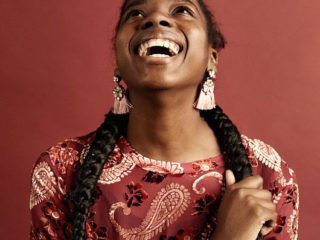The little girl was trembling when I approached. I saw the tear stains on her cheeks, the way she was cowering to shield herself from everything outside of her. I knelt down to sit beside her, shocked by her fragility.
“Are you OK?” I asked cautiously, protectively.
Without looking at me, she replied, “I’m sorry. I’m so sorry.”
I wondered what she was taking responsibility for. What could this child have done to feel such shame?
“Whatever it is, it’s OK. Everything will be OK.”
She seemed surprised by the softness in my voice. She looked up and said, “But you’ve never said it’s OK before. I keep messing up. I’m sorry. I’ll do better.”
I instinctively reached down to wipe hair from her face. She winced. I softened more.
“Little one, I’m not upset with you. There’s nothing you could have done to deserve to be crying here alone.”
Confused again, she said, “They put me here, but you told me to stay here. This is the first time you’ve come.”
I held her hand, recognizing her for the first time. The bleach blonde hair, the brown eyes, the small birthmark on her eyelid—the little girl was me. With newfound strength, I moved forward, positioning myself between her and the world.
I told her, “What do you need? I’m here. I’m safe. I’m listening.”
To be completely honest, I’m afraid to write this. Dealing with childhood trauma is a complex and personal journey. I want you to know that I’m right here with you, traveling this road too.
I don’t know your story, but I can say with complete confidence—the trauma you experienced was real. It was too much for a child to carry. You are worthy of healing. You are a human with breath in your lungs. Thus, you deserve to be here—loved well and treated kindly.
You deserve to be here—loved well and treated kindly.
What are the effects of trauma?
Trauma is a thief. It steals parts of your innocence. The events, words or actions from traumatic experiences leave you with the burden of figuring out why. While we grow up physically, our inner child stays where the trauma occurred: afraid, confused, ashamed and certain that she was to blame.
I didn’t remember much of my own trauma until adulthood. I didn’t believe it until I learned to trust my body. I didn’t begin to heal until I was met by someone with kind and listening ears and until I believed that I was worthy of healing.
What might the journey of processing trauma look like?
Processing trauma takes work, and it comes in ebbs and flows. At times, it’s a tidal wave—demolishing everything in its path. Other times, it’s a quiet, clear morning ocean. It is vital to have grace with yourself and the process. While you cannot control the ocean, have confidence knowing that you can ride out whatever waves the ocean brings.
I wasn’t validated in the trauma I experienced. I continued my life in a trauma response state. When you experience trauma, your body responds in fight, flight or freeze. I stayed in a frozen state up until about a year ago when I sought treatment.
What happens when you don’t process trauma?
Our bodies are wise. They do what they can with what they have for survival. Unfortunately, when trauma is not processed, our bodies don’t know that the threat is gone. So we remain in a trauma response state.
As we get older and learn to live with unprocessed trauma, we develop ways to cope—such as eating disorders, addictions, self-harm or suicidal thoughts. Our bodies desperately find ways to help relieve our stress. We can easily fall into abusive relationships or familiar chaotic cycles in adulthood. Feelings of anxiety, numbness and depression become our new norm.
How can we learn to identify and process trauma?
This is where a relationship with your body is key. Our bodies lead us back to ourselves.
For me, it took a long time plus therapy and treatment to understand that my body is on my side. Now I know that every part of me—no matter how confusing or seemingly shameful—is on my team. Everything my body has done has been an attempt to survive and control an unnatural experience.
It is important to understand that your inner child is still afraid and carrying the weight of trauma. Therefore, you must seek her out. You must become the person you needed back then.
Ask yourself what the younger version of you needed. Did you need assurance? Do you need safety? Did you need to be held? Consider what you need now as well.
This is how we find power. By doing something good for ourselves, we learn to embrace our inner child with grace and compassion. We rebuild a relationship of trust with ourselves. We learn to show up for ourselves, again and again.
This is how we find power . . . and we learn to embrace our inner child with grace and compassion.
I will never deny that trauma robs human beings of good things—innocence, hope and trust in ourselves and others—but I don’t believe that these hard, painful parts of our stories are meant to be wasted. Our pain plants a seed that only pain can. From that seed, we gain a unique strength that can only be earned through surviving sorrow. We develop fortitude—something that can only be built after overcoming trials.
Sweet friend,
I’m sorry for what happened to you. You were never meant to experience what you went through. I know that nothing can take away what happened, but healing is possible.
There is room for grieving and growth here. You have a chance to become the person you needed back then. Every part of you—your body, mind and soul—is on your team.
An amazing therapist once told me that, “We have everything we need within ourselves to heal ourselves.” It’s the narrative of trauma that says, “You can’t.” The truth is— we can. We already have been. It is possible to free the child in us who was crippled by trauma. It is possible to heal.
If you or someone you know needs help, then visit National Suicide Prevention Lifeline or 211. You can also call The Lifeline at this number for 24/7, free and confidential support: 1-800-273-8255.
Did you walk through a traumatic experience in your childhood or youth that has affected you as an adult? How have you learned to process that trauma?
Image via Melanie Acevedo, Darling Issue No. 11











